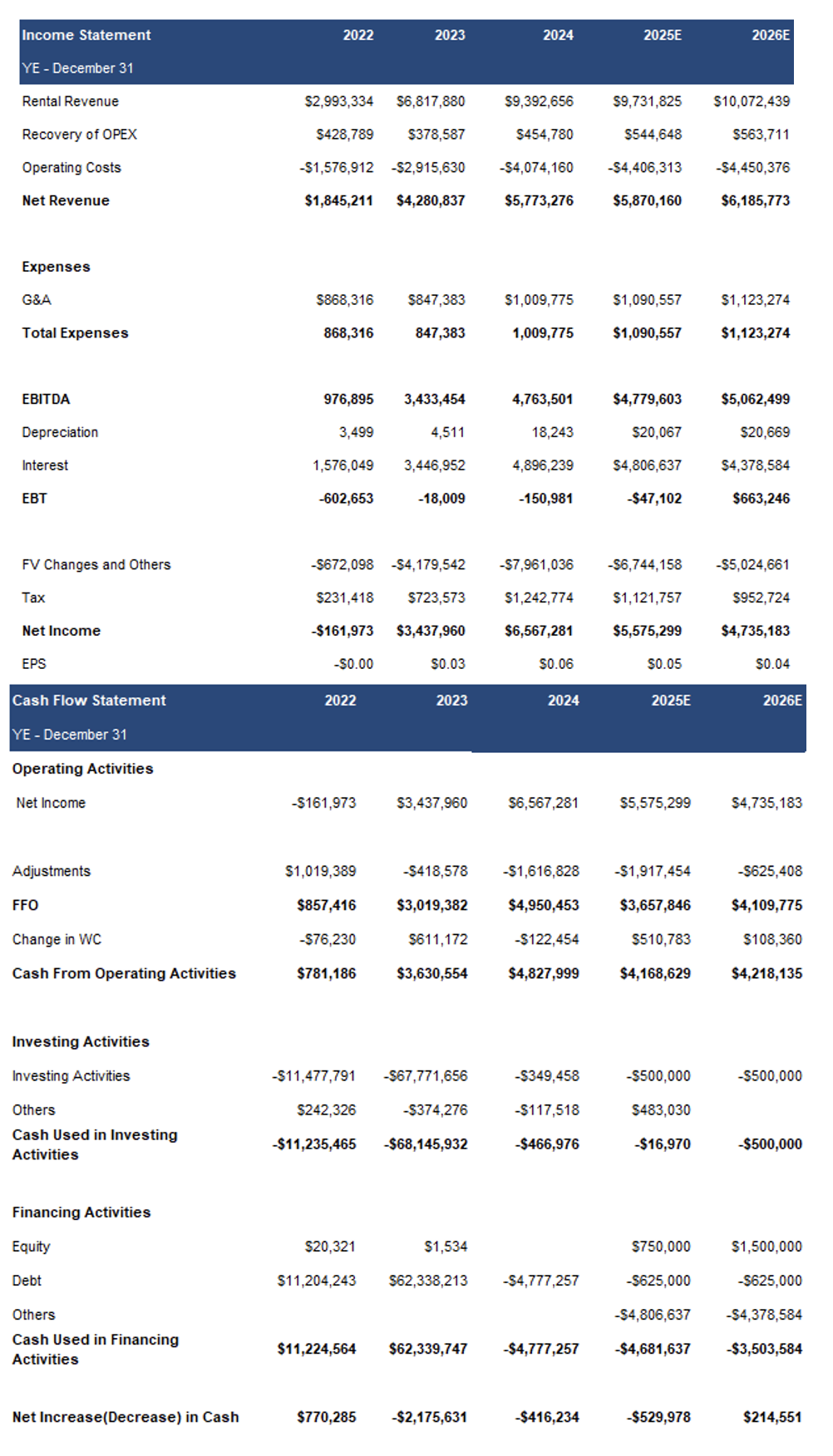- Q1 revenue rose 4% YoY but missed our estimate by 1%, primarily due to lower occupancy. EBITDA and adjusted EPS were flat.
- At the end of Q1, YEG owned $135M in real estate investments (unchanged QoQ, and up $8M, or 6% YoY), including 10 residential projects totaling 519 units, and one commercial project spanning 28,026 sq. ft. Given the rise in YEG’s rents in Q1, we now anticipate a 5.0% YoY increase in property valuations for 2025 (previously 3.5%).
- Since the end of 2024, the BoC has cut rates twice, totaling 50 bp. We see room for one or two more cuts this year, driven by rising unemployment, geopolitical/trade risks, and concerns over potential weakness in GDP growth. Lower rates and higher rents should compress cap rates, and boost property valuations.
- We maintain a positive outlook on the Canadian multi-family residential market, buoyed by strong rental demand, elevated property prices, and challenges in affordability due to high mortgage rates for new homebuyers.
- YEG’s forward EV/EBTIDA is 15x vs the sector average of 19x, a 23% discount.

Price and Volume (1-year)
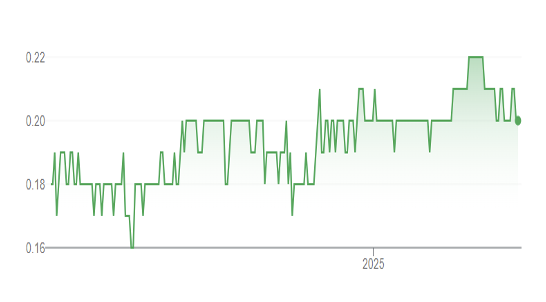
| |
YTD |
12M |
| YEG |
-7% |
3% |
| TSXV |
18% |
27% |
Investment Strategy
YEG focuses on multi-family rental properties capable of potentially generating steady cash flows, and capital gains. Management’s key objectives include:
- Expanding through strategic acquisitions of multi-family residential properties in cities experiencing robust population growth, with an initial emphasis on B.C. and Alberta
- Increasing rental revenue through organic growth, development, repositioning, renovations, and optimization strategies
- Over the next three to five years, management is focused on growing the portfolio to over $500M.
YEG’s portfolio includes 11 projects (unchanged QoQ), including 10 residential projects totaling 518 units, and one commercial spanning 28,026 sq. ft
30+ year track record in real estate. The CEO owns 73% of YEG’s equity. Building a portfolio capable of potentially generating steady cash flows, and capital gains
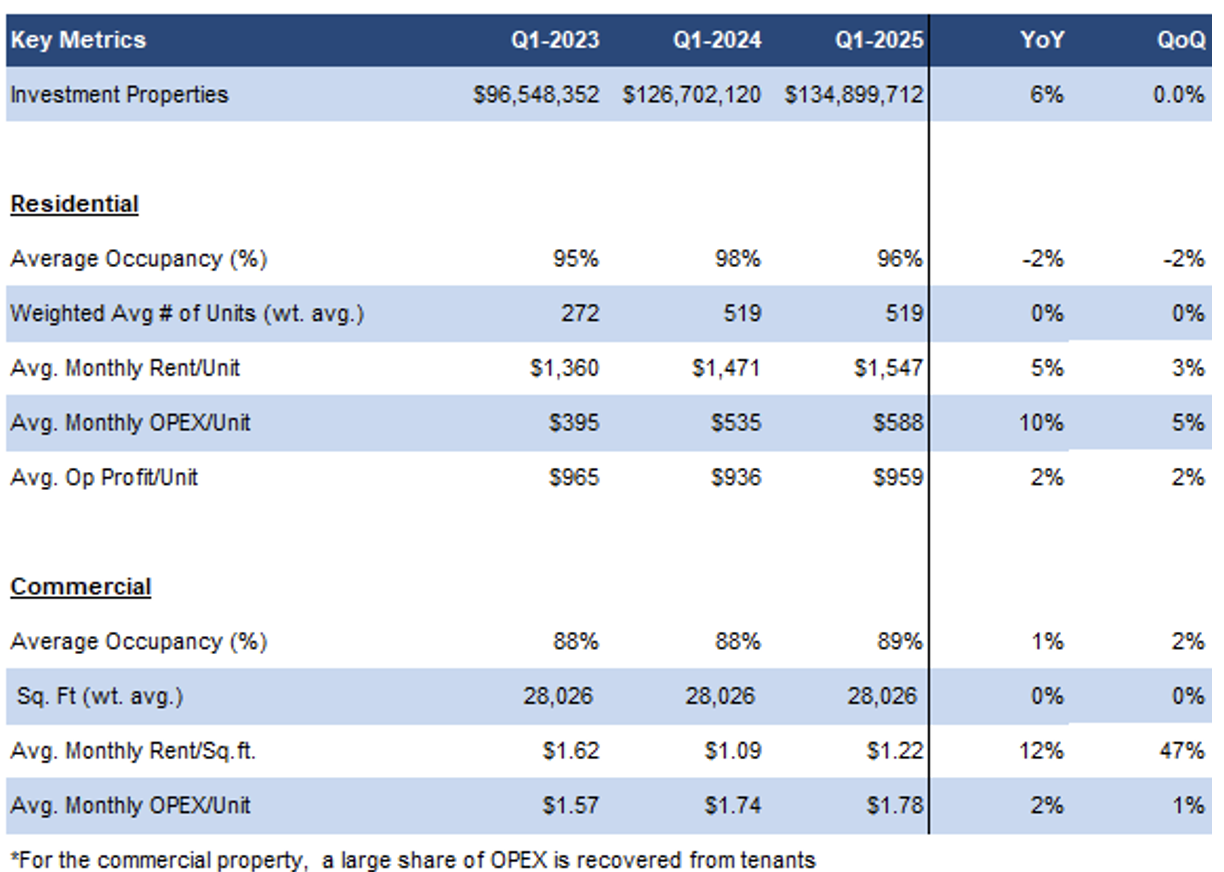
Source: FRC / Company
YEG owns 100% equity in its projects. At the end of Q1, YEG owned $135M in real estate investments, flat QoQ, but up 6% YoY, driven by valuation gains fueled by higher rent
Residential occupancy fell 2 pp QoQ, offset by a 3% increase in rent. We anticipate property valuations increasing by 5.0% (previously 3.5%) in 2025, driven by rent growth following recent renovations
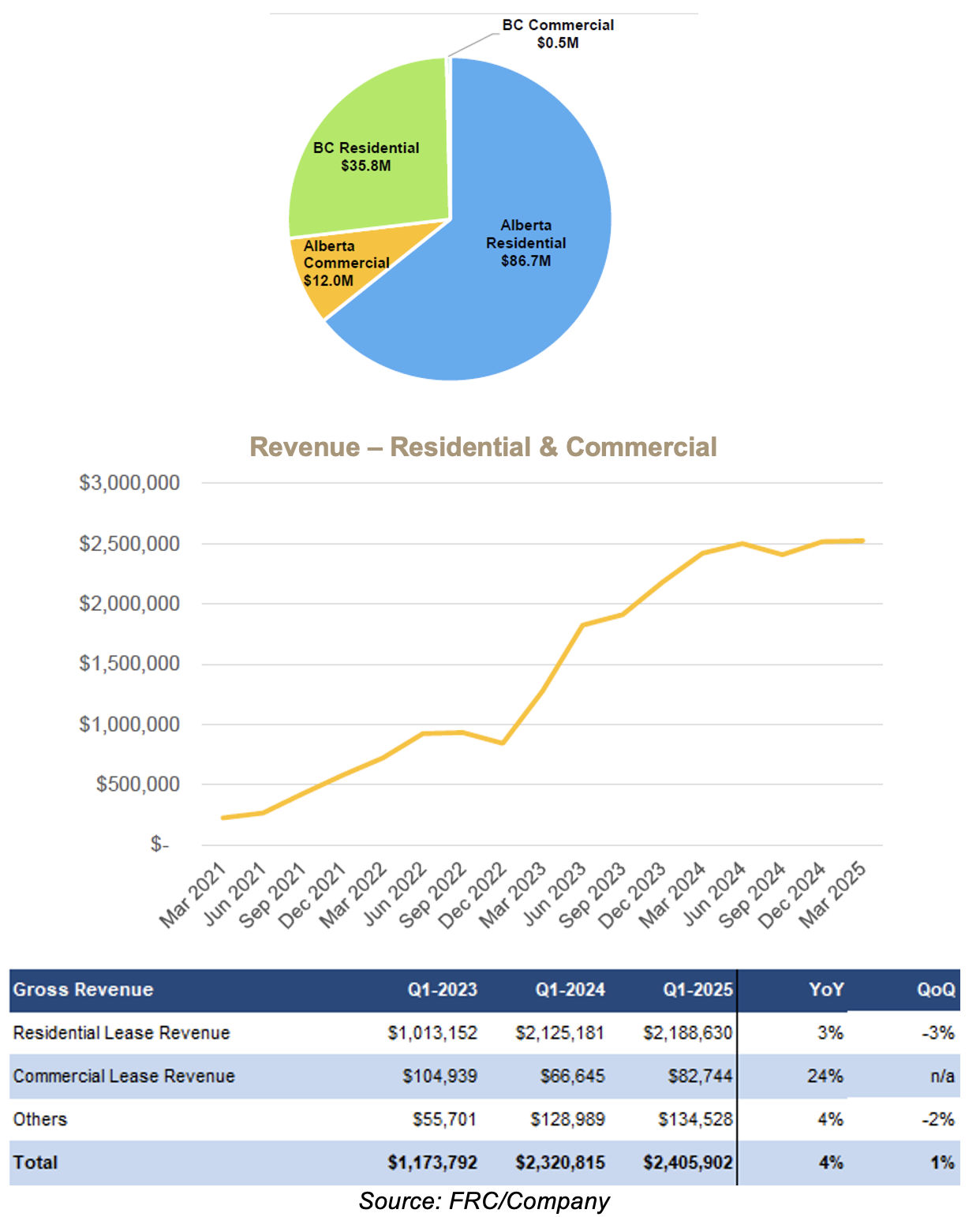
Three residential properties in Edmonton accounted for 64% of YEG’s portfolio. Q1 gross revenue was up 4% YoY, missing our estimate by 1%, driven by higher rents. In Q1-2025, residential accounted for 91% of revenue (92% in Q1-2024l)
The following sections summarize YEG’s projects.
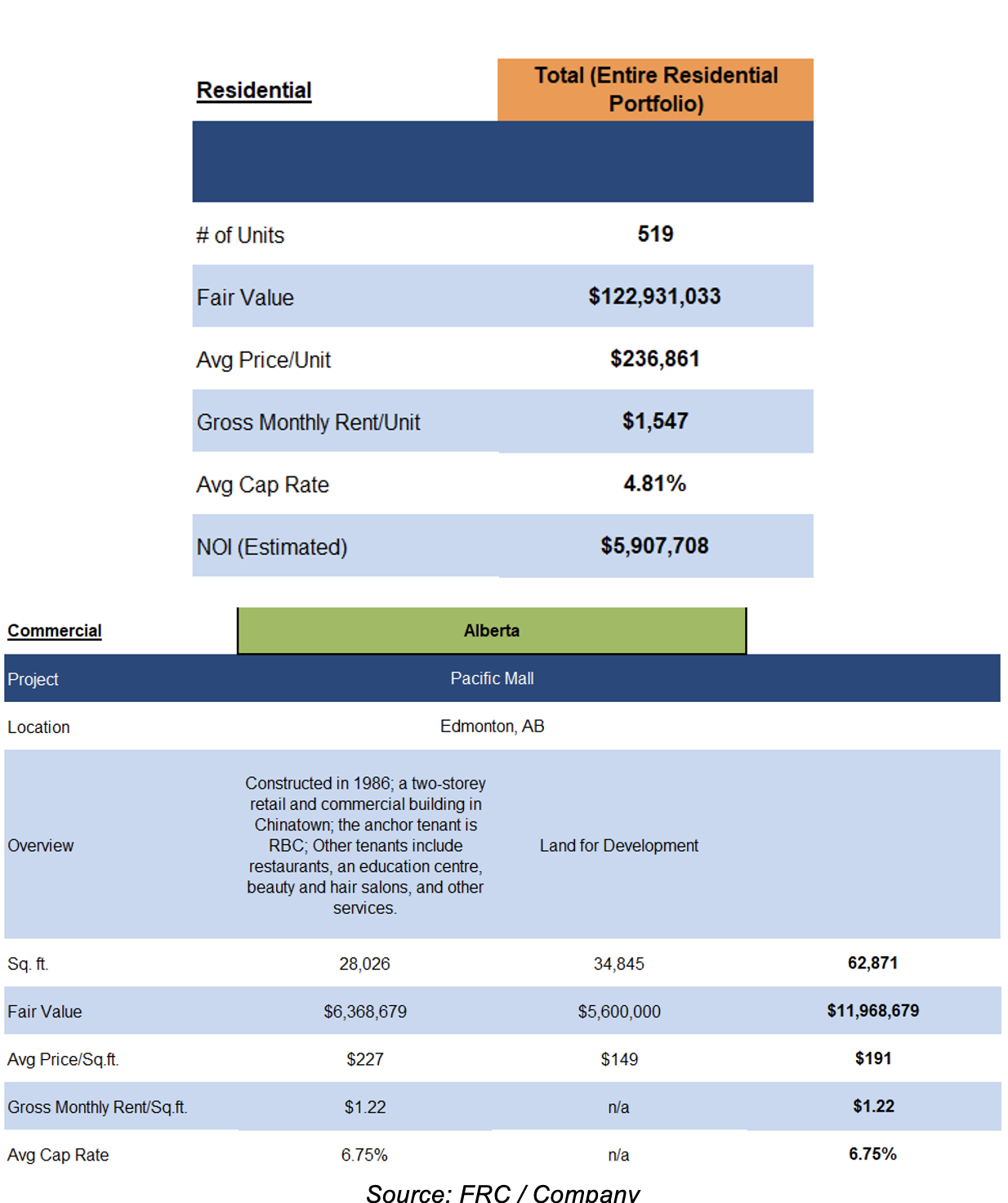
No material changes QoQ. 10 residential projects totaling $5.9M in NOI, valued at $123M, or $237k/unit. One commercial/retail project in Edmonton, with RBC (TSX: RY) as the anchor tenant
Financials
Q1 net revenue was up 2% YoY, missing our estimate by 1%, driven by higher residential vacancy. EBITDA was flat, missing our estimate by 4%. Adjusted EPS was relatively flat, missing our estimate by 7%
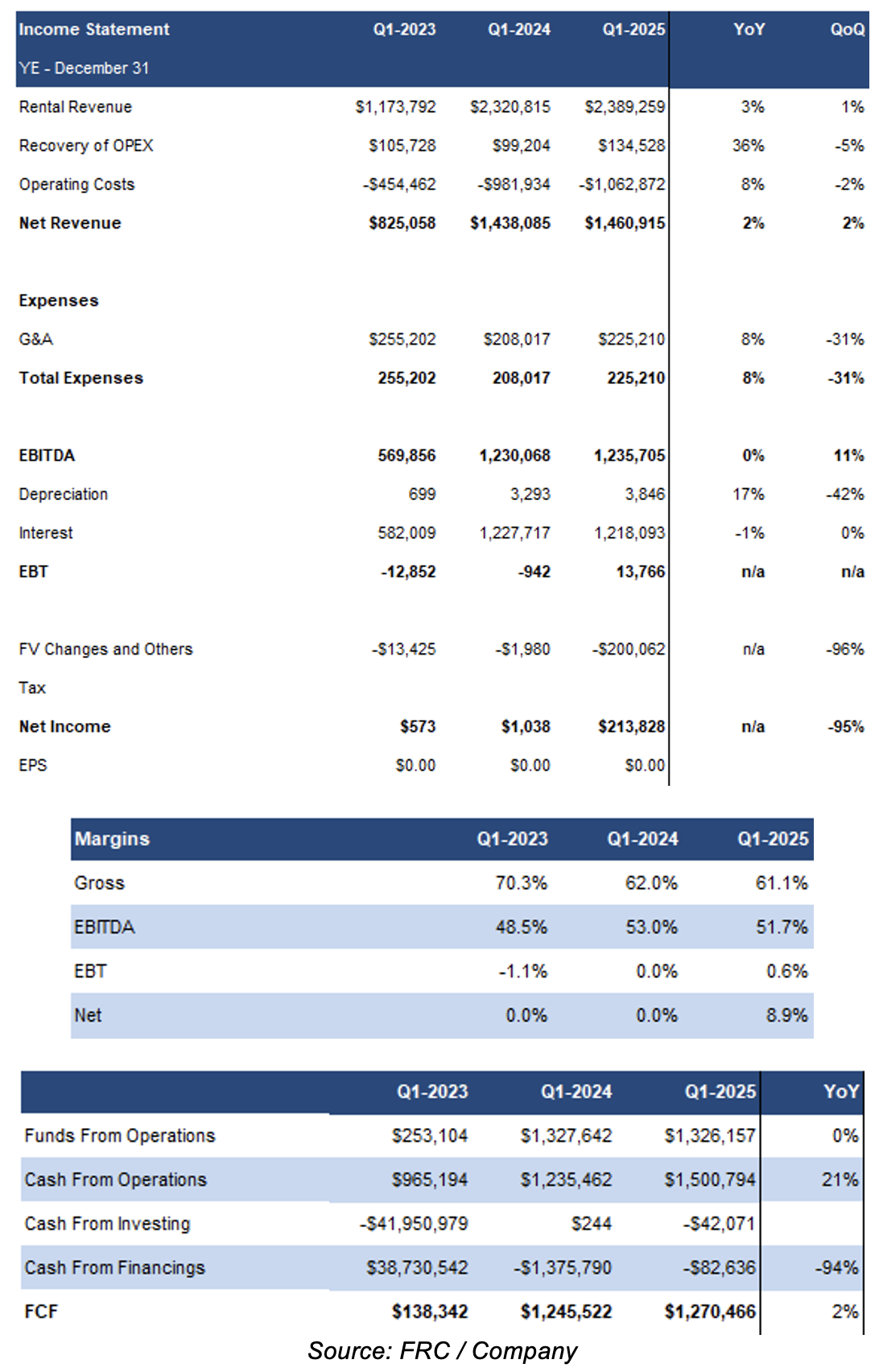
Gross and EBITDA margins fell by approximately 1 pp. Free cash flows were up 2% YoY
Debt to capital was 76% at the end of Q1 (unchanged QoQ) vs the sector average of 52%. As equity grows through potential gains in property valuations, YEG's debt to capital should trend lower. No outstanding options/warrants are in-the-money
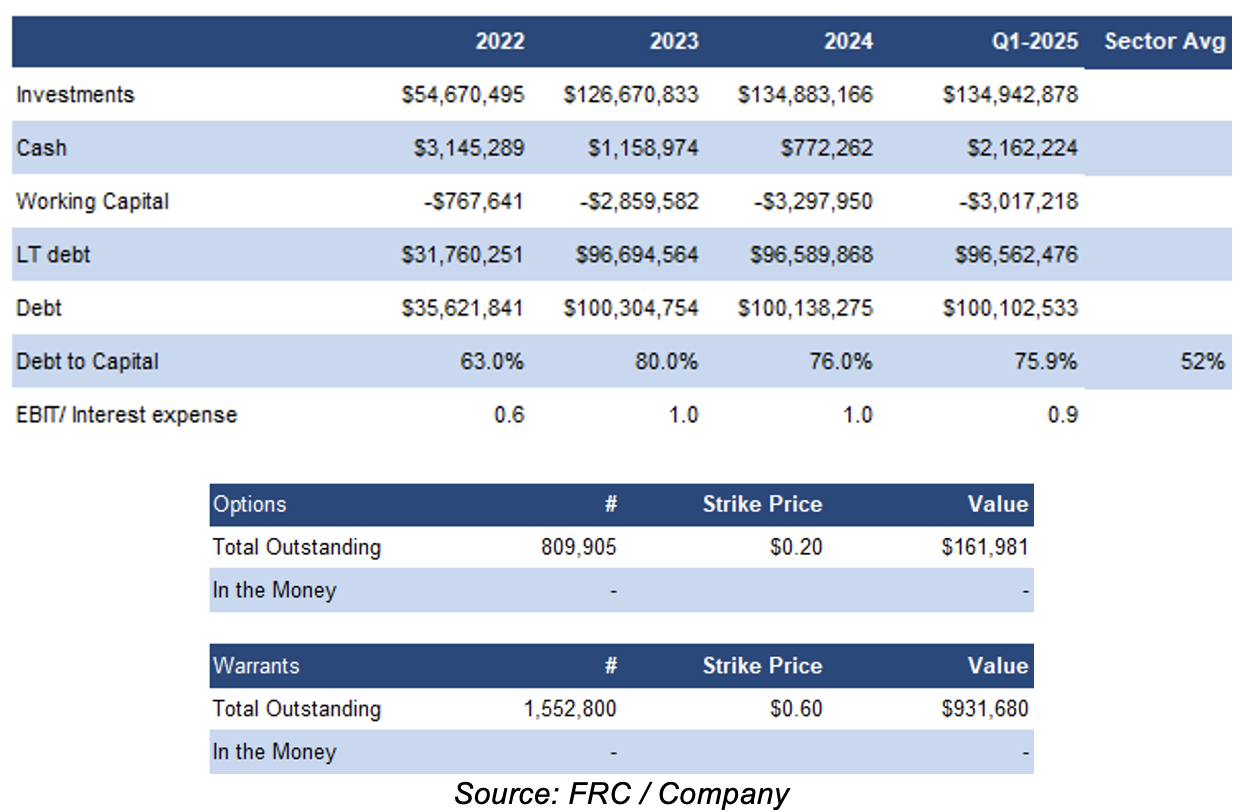
FRC Projections and Valuation
As Q1 revenue was slightly below expectations, we are lowering our 2025 EBITDA forecast by 4%. However, we are raising our EPS forecast to $0.05 (from $0.04), primarily due to higher projected property valuation gains

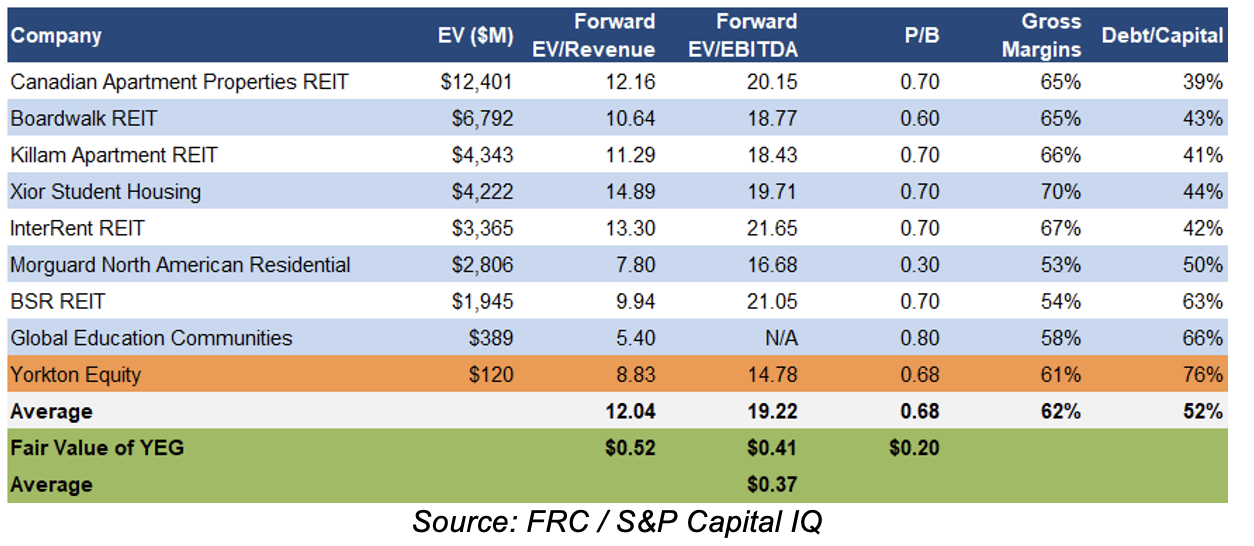
Sector multiples are up 3% since our previous report last month. YEG’s forward EV/Revenue is 9x (unchanged) vs the sector average of 12x (up 2%). Applying sector averages to our revenue and EBITDA estimates, we are arriving at a fair value estimate of $0.37/share (previously $0.34/share)
Valuation increased primarily due to higher sector multiples, partially offset by our lower revenue estimate
We are reiterating our BUY rating, and adjusting our fair value estimate from $0.34 to $0.37/share. We believe short-term softness in occupancy reflects a deliberate value-add strategy that is beginning to show results through rising rents. As occupancy rebounds, and rate cuts support valuations, we see upside potential in YEG’s valuation.
Risks
We are maintaining our risk rating of 3 (Average)
We believe the company is exposed to the following key risks:
- Investments in real estate are typically affected by macroeconomic conditions, and the health of local real estate markets
- Like all real estate companies, YEG utilizes leverage to amplify returns
- Interest rates
- Property-specific risks such as vacancy rates, and unexpected maintenance or repair costs
APPENDIX
